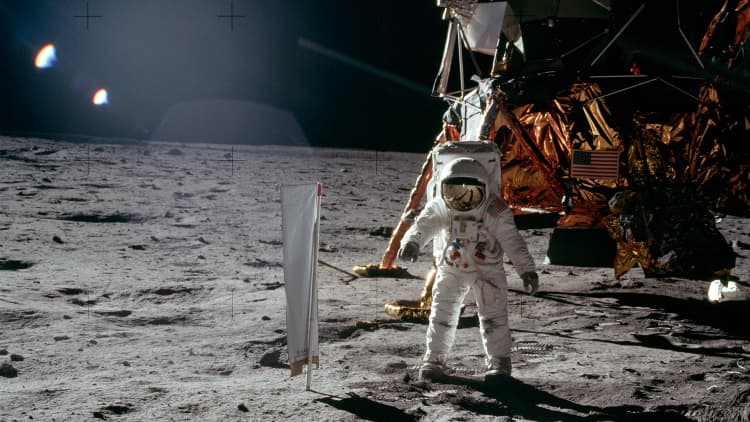A “grapple test” of the spacecraft’s robotic servicing arm.
NASA
NASA is shutting down a $2 billion project to test satellite refueling in space, it announced Friday, after the agency’s auditor criticized the program’s lead contractor, Maxar, citing “poor performance.”
The space agency said in a statement that the OSAM-1 — On-orbit Servicing, Assembly, and Manufacturing 1 — project was being discontinued after nearly a decade of work.
NASA cited “continued technical, cost, and schedule challenges, and a broader community evolution away from refueling unprepared spacecraft, which has led to a lack of a committed partner” in a statement.
“While we are disappointed by the decision to discontinue the program, we are committed to supporting NASA in pursuing potential new partnerships or alternative hardware uses as they complete the shutdown,” Maxar Space Systems spokesperson Eric Glass said in a statement to CNBC.
NASA did not respond to CNBC’s request for comment on how many personnel will be affected as a result of OSAM-1’s cancellation.
Maxar was taken private by private equity firm Advent International in May 2023 before being split into two businesses: Maxar Intelligence, focused on satellite imagery and analytics, and Maxar Space Systems, focused on spacecraft manufacturing.
Sign up here to receive weekly editions of CNBC’s Investing in Space newsletter.
NASA’s Goddard Space Flight Center in Maryland was leading the work on OSAM-1, with Maxar Space Systems as the project’s prime contractor under multiple deals. OSAM-1 has been in development since 2015, with the goal of docking with the U.S.-owned Landsat 7 imagery satellite in orbit, to repair and refuel the aging spacecraft to extend its life.
But OSAM-1 has fallen years behind schedule, while the program’s cost to NASA soared. In a scathing October report, NASA’s Inspector General “found that project cost increases and schedule delays were primarily due to the poor performance of Maxar,” while noting that the agency’s Goddard center has also struggled with key parts of development.
“NASA and Maxar officials acknowledged that Maxar underestimated the scope and complexity of the work, lacked full understanding of NASA technical requirements, and were deficient in necessary expertise,” NASA’s Inspector General said in its report, following a yearlong audit.
The agency’s auditor noted that OSAM-1 was likely to both “exceed its current $2.05 billion price tag and the December 2026 launch date,” which was already six years behind schedule. The report, citing Maxar representatives, noted the company was “no longer profiting from their work on OSAM-1” and, in NASA’s view, it no longer appeared “to be a high priority for Maxar in terms of the quality of its staffing.”
NASA’s cancellation of OSAM-1 comes months after Maxar delivered major segments of the spacecraft to Goddard in Maryland — but other key parts were yet to be finished.
Satellite servicing is a nascent sub-sector of the space industry that’s only recently begun to be proven out, with Northrop Grumman’s extension missions representing an early effort.


